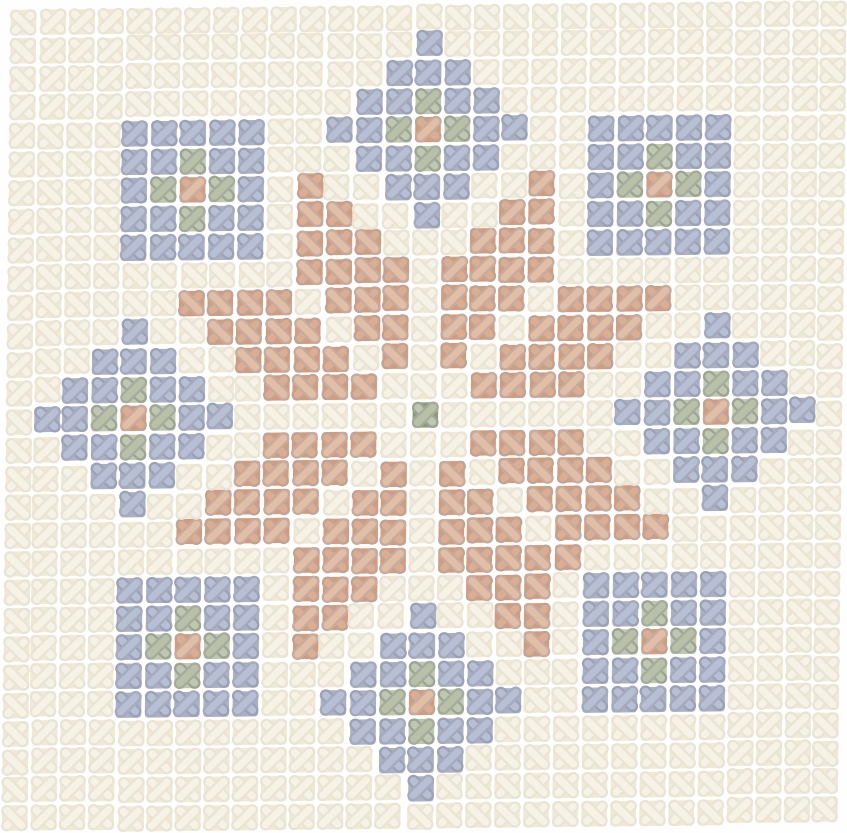

The Cross-point of Palestinian Identities
Palestinian embroidery (tatreez) was added to the UNESCO cultural heritage list not just due to the beauty of this practice and the masterfully stitched threads of colours and patterns, but because of the significance of Palestinian embroidery in the stories and histories it carries.
It is now well known how fashion and fashion design can be a platform of expression and communication; this has always been the case for the Palestinian Thobes. Embroidered dresses and headdresses were a traditional garment in rural areas of Palestine and among Bedouins, and they were not simply a fashion statement but a way to convey the meaning of women’s identities: the village they came from, their marital and social status, and also more intimate feelings of longing and belonging. For example, it was believed that the personality of a girl could be understood from her handicraft and artistry, the chosen colours, patterns, and fabric of her embroideries. Even the names of techniques, shapes, and motifs were changed and adapted to mirror the situation of the embroiderer: so a woman from Ramallah would see a moon where a woman of Hebron saw a star, and the older woman would see an orange where a young girl saw a rose.
What is even more important about the Palestinian art of embroidery is the role it played in creating a sense of community across space and time. Women from different areas and different generations would often gather for celebrations, or other important communal events, to learn, share and inspire each other’s practice and creation. In this way, knowledge was preserved, transferred, and used to reinforces bonds and sense of agency.
The creation of thobes and embroidered garments has fluctuated through places and years, but it is now playing again its crucial role for the revindication of cultural and social identity across Palestine and for Palestinians in the diaspora. New generations of Palestinian men and women are re-discovering and disseminating the allure of this art which communicates, in such delicate and yet powerful ways, the beautifully interwoven reality of Palestinian lives and identities.
It comes with no surprise then that the Palestinian embroidery has influenced other spheres of art and creativity. The famous poet and artist Jabra Ibrahim Jabra, who grew up in Bethlehem and Jerusalem in the 1940s, was highly influenced by the aesthetic and symbolic value of women’s tatreez. For him “this embroidery symbolizes a joie de vivre…. A joyous exultation in the powerful miracle of resurrection, in nature as in mankind.”
Testimonials
Lorem ipsum dolor sit amet, consectetur adipiscing elit. In ac auctor eros, id gravida libero. Proin elit tellus, sollicitudin et ultrices a, hendrerit efficitur enim. Etiam pulvinar et risus nec pulvinar. Morbi eget enim scelerisque, imperdiet ligula sit amet, porta enim. Ut eros quam, venenatis at placerat.
Lorem ipsum dolor sit amet, consectetur adipiscing elit. Nunc dapibus feugiat diam, nec luctus orci molestie vel. Suspendisse potenti. Quisque id aliquet dolor, posuere posuere purus. Aenean mauris ipsum, pulvinar ut rutrum eget, maximus in libero. Praesent.
